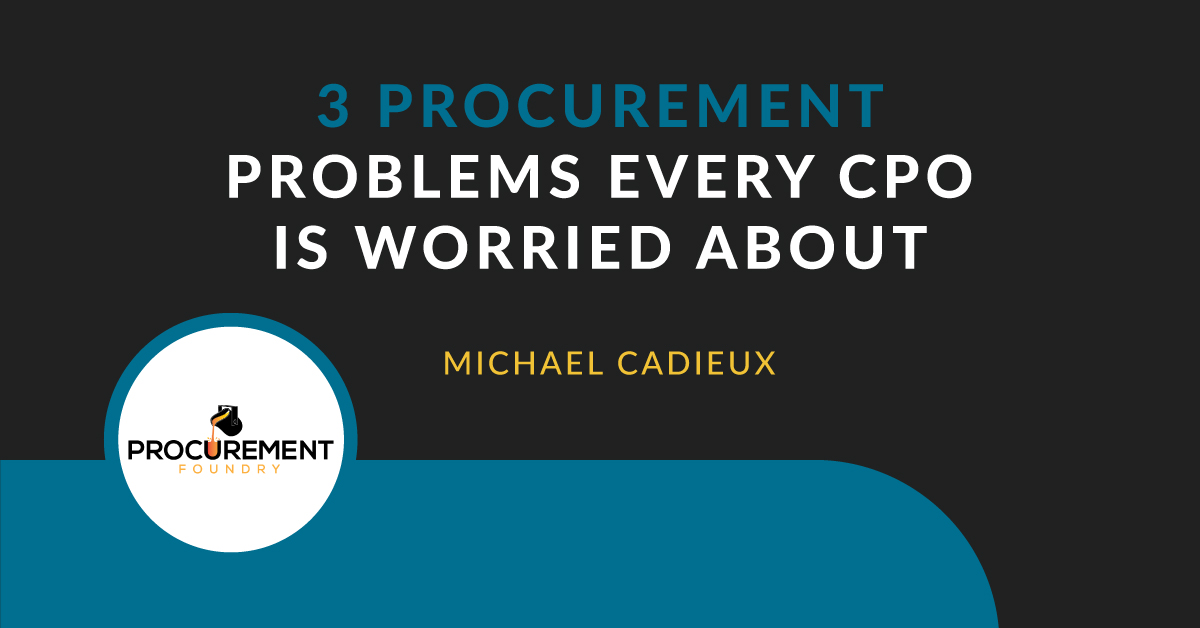Maximizing Savings Opportunities and Procurement's Strategic Value for CPOs
Saving money is not always about pinching pennies: advanced and data-driven insights enable you to identify real cost-saving opportunities, negotiate...

Are you a procurement practitioner looking to improve your processes? You are not alone.
Procurement directors and CPOs, in particular, are constantly being reminded of how these are unprecedented times for the procurement industry.
This article details a trio of common procurement problems CPOs face today, as well as how to tackle them in today’s new normal.
Following COVID-19—and instead of remote working from home—a new era of office etiquette has been ushered in, and it looks like it is here to stay.
With remote working becoming the norm now versus a temporary safety measure, CPOs are seeing the need to embrace both hybrid and remote working models. They also realize the necessity of developing a different—and innovative—approach to making these ways work.
But this is not as easily done by deciding to welcome the change with open arms. Instead, hybrid and remote working can bring many headaches and hoops to jump through to make it all come out in the black instead of having CPOs seeing red.
So, what are the hassles related to remote and hybrid working? For one, employing an entirely remote workforce brings hidden costs that can hurt the bottom line—business supplies at the top of the list.
Making sure that maverick spending doesn’t go rogue among remote workers, procurement software that empowers remote workers to handle their own purchasing decisions while working in their satellite locales helps a lot. Specifically, features like business guest checkout options let organizations set up their team as home users, with access to purchasing among pre-approved products and services from the typical business account. In this way, team members are given total access to all they require, exactly how much they truly need, and get it sent straight to their (now home) office. Procurement can also rest assured compliance remains intact.
Whether you are a small outfit or a large conglomerate, it will benefit you to invest time, energy, and money into better managing your tail spend. Tail spend management is no longer relegated to the sidelines as a non-necessary focus area. Instead, it is vital for all.
And while it may seem like a luxury at the start, the ROI that can result from proper supply chain savings and nipping budget leakage will render your investment as paying for itself. Organization report anywhere from 5 to 15% savings, which is nothing to sneeze at. That could translate to billions of dollars in some organizations.
Going hand in hand with minimizing tail-end spend is the renewed, strong focus on supplier relationships. Establishing and maintaining trusted relationships with suppliers you can count on—and who you know are running their operations at optimum efficiency—is priceless in procurement, especially in regards to keeping tail spend in check. If companies can even reduce 10% of tail spend suppliers that is a huge win.
When looking at the current state of the world, one has to wonder: “How do we make sustainability a focus when the world continues to struggle with black swan events?” While events across the globe are drawing our attention, sustainable business practice is still a huge concern for procurement.
So, how do we bring sustainability and the need for Environmental, Social, and Corporate Governance (ESG)-friendly practices from the shadows to center stage? CPOs are struggling with this question daily.
A lot of companies are starting with GHG and carbon footprint, based on government regs about climate change. Two options (preferably a combo of the pair) exist: We can focus our efforts on removing the gases that already exist in the environment, or/and we can focus on limiting how much greenhouse gas we are generating ourselves.
Tackling this is extremely complicated, and then we get into the issues of sub-tier suppliers and visibility into their operations. Many organizations are starting small, like replacing existing cars with electric fleets.
Despite being complicated, ESG is a massive concern for procurement and won’t be going away anytime soon.
Are you ready to stop worrying about your common procurement problems and empower yourself with the education and tools to tackle each one as they come up? Learn more by reading our blog about top procurement KPIs.

Saving money is not always about pinching pennies: advanced and data-driven insights enable you to identify real cost-saving opportunities, negotiate...

The topic of our recent roundtable discussion with a dozen Procurement Foundry community members—exploring potential flaws in procurement incentive...

Every 30 days or so, I get the same alert on my phone—“Your electricity bill is available for viewing.” I take a quick look, make sure nothing seems...